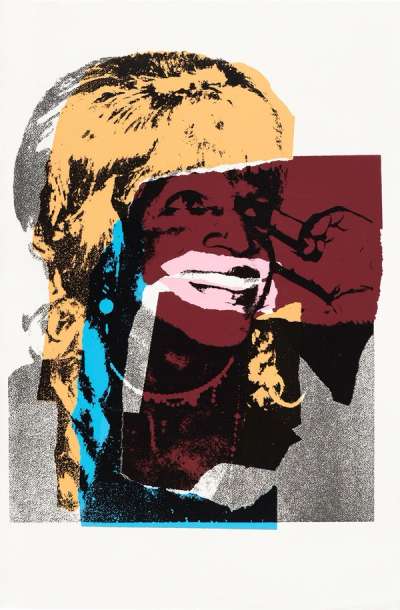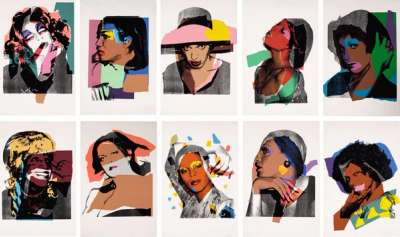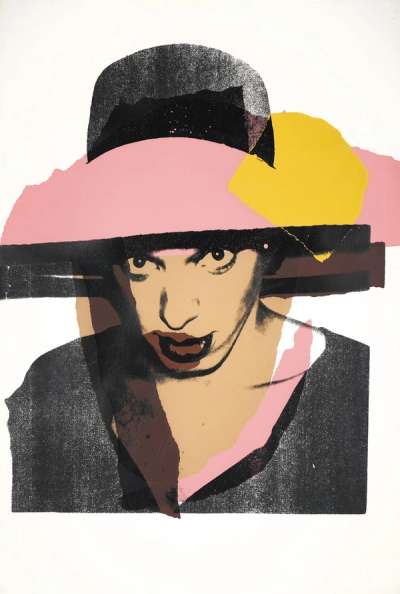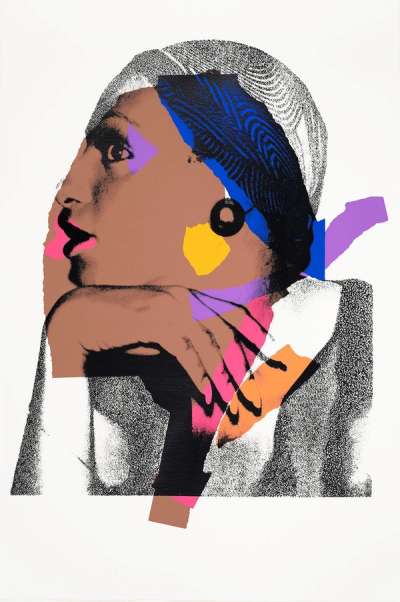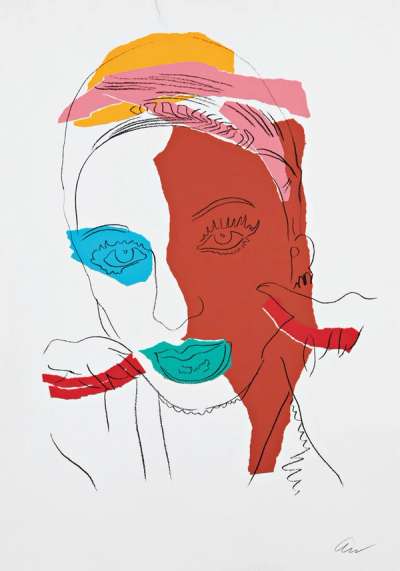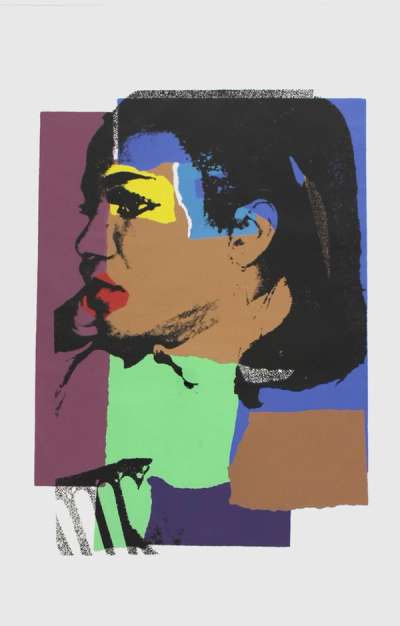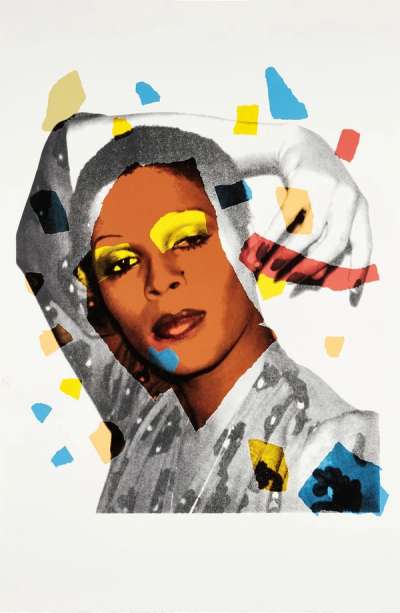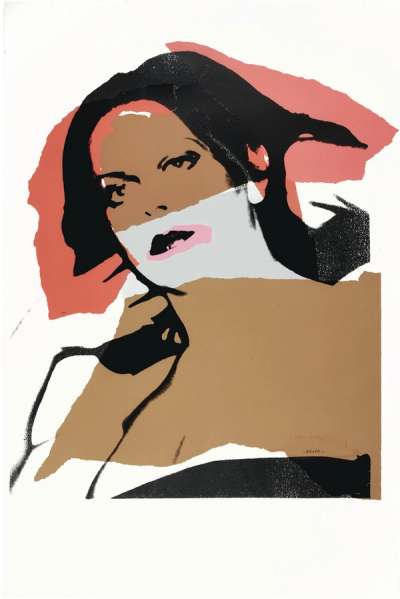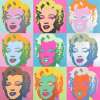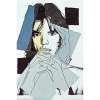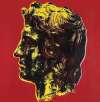Ladies
And Gentlemen
While the Ladies and Gentlemen print portfolio is Andy Warhol’s largest, it is the story—or rather, stories—behind this series that make it one of Warhol’s most fascinating. In this collection, Warhol portrays transgender women who he met in a popular Manhattan spot for New York’s Black and Latinx trans women and drag queens at the time. This series has courted both controversy and celebration. On the whole, this portfolio is admirably progressive for its day; Warhol used his platform wisely to platform a marginalised demographic. It has been achieved greater poignancy since, once the Warhol Foundation finally uncovered the identities of the sitters—including Marsha P. Johnson—in 2014, thus reinstating their individual legacies as a key part of the prints’ power.
Andy Warhol Ladies And Gentlemen For sale
Ladies And Gentlemen Value (5 Years)
Works from the Ladies And Gentlemen series by Andy Warhol have a strong market value presence, with 329 auction appearances. Top performing works have achieved standout auction results, with peak hammer prices of £154268. Over the past 12 months, average values across the series have ranged from £3771 to £150000. The series shows an average annual growth rate of 0.61%.
Ladies And Gentlemen Market value
Auction Results
| Artwork | Auction Date | Auction House | Return to Seller | Hammer Price | Buyer Paid |
|---|---|---|---|---|---|
 Ladies And Gentlemen (F. & S. II.132) Andy Warhol Signed Print | 9 Dec 2025 | Bonhams New Bond Street | £6,800 | £8,000 | £10,000 |
 Ladies And Gentlemen (F. & S. II.128) Andy Warhol Signed Print | 9 Dec 2025 | Bonhams New Bond Street | £5,950 | £7,000 | £9,000 |
 Ladies And Gentlemen (F. & S. II.135) Andy Warhol Signed Print | 9 Dec 2025 | Bonhams New Bond Street | £6,800 | £8,000 | £10,000 |
 Ladies And Gentlemen (F. & S. II.129) Andy Warhol Signed Print | 27 Nov 2025 | Koller Zurich | £7,650 | £9,000 | £11,000 |
 Ladies And Gentlemen (F. & S. II.130) Andy Warhol Signed Print | 25 Nov 2025 | Rosebery's Fine Art Auctioneers | £5,525 | £6,500 | £8,500 |
Ladies And Gentlemen (F. & S. II.127) | 3 Oct 2025 | Artcurial | £5,950 | £7,000 | £9,000 |
 Ladies And Gentlemen (F. & S. II.126) Andy Warhol Signed Print | 3 Oct 2025 | Artcurial | £5,950 | £7,000 | £9,000 |
 Ladies And Gentlemen (F. & S. II.133) Andy Warhol Signed Print | 3 Oct 2025 | Artcurial | £6,375 | £7,500 | £10,500 |
Sell Your Art
with Us
with Us
Join Our Network of Collectors. Buy, Sell and Track Demand
Meaning & Analysis
The Ladies and Gentlemen print portfolio is Warhol’s largest, depicting various portraits of transgender women he met in Manhattan.
In this collection, Warhol produces portraits of transgender women who he met in Manhattan’s Gilded Grape bar, a popular space where New York’s Black and Latinx trans women and drag queens came to spend time with one another, dance and meet new people. To make the portraits, Warhol took over 500 polaroid pictures of 14 different subjects.
Having 14 subjects for the collection meant that Warhol could get to know the sitters on a personal level. By getting to know the models in an intimate studio setting, Warhol was able to learn more about their identities which was a key element of the collection which explores themes of performance, glamour and personality.
The collection was commissioned by Italian art dealer Luciano Anselmino who paid $900,000 for 105 canvases. Anselmino came up with the title of the collection, Ladies and Gentlemen, which is often criticised for the way in which it seems to dramatise gender and performance instead of focussing on the lived experiences of the sitters, many of whom were very poor and faced extreme prejudice in their daily lives. Anselmino also wanted the portraits of New York’s drag queens to be ‘impersonal’ and ‘anonymous’ meaning that the names and identities of the models remained anonymous until 2014 when the Warhol Foundation published an official list of all the Ladies and Gentlemen paintings.
